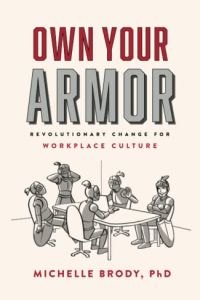Join getAbstract to access the summary!

Join getAbstract to access the summary!
Michelle Brody
Own Your Armor
Revolutionary Change for Workplace Culture
Michelle Brody, 2022
What's inside?
Defensive managers and employees fuel workplace dysfunction.
Recommendation
Executive coach and clinical psychologist Michelle Brody addresses the thorniest part of workplace culture – conflicting team dynamics that hurt productivity — by using illustrations, self-assessment questionnaires and a psychological approach adapted from couples therapy. Efforts to change culture by pointing fingers at the leader or “difficult” members of the team tend to backfire because defensiveness and dysfunction spread when everyone “armors up” to protect themselves. Brody offers examples of how people armor up at work, saying that real change happens when team members examine their armor and take responsibility for its impact. She presents masterful tools for encouraging team members to shed their armor and build the trust required for a collaborative culture. This is an essential pre-read for HR professionals and coaches to use to kick off team development activities amid complicated dynamics.
Summary
About the Author
Michelle Brody, PhD, is a clinical psychologist and executive coach. She is also the author of Stop the Fight: An Illustrated Guide for Couples.

















Comment on this summary